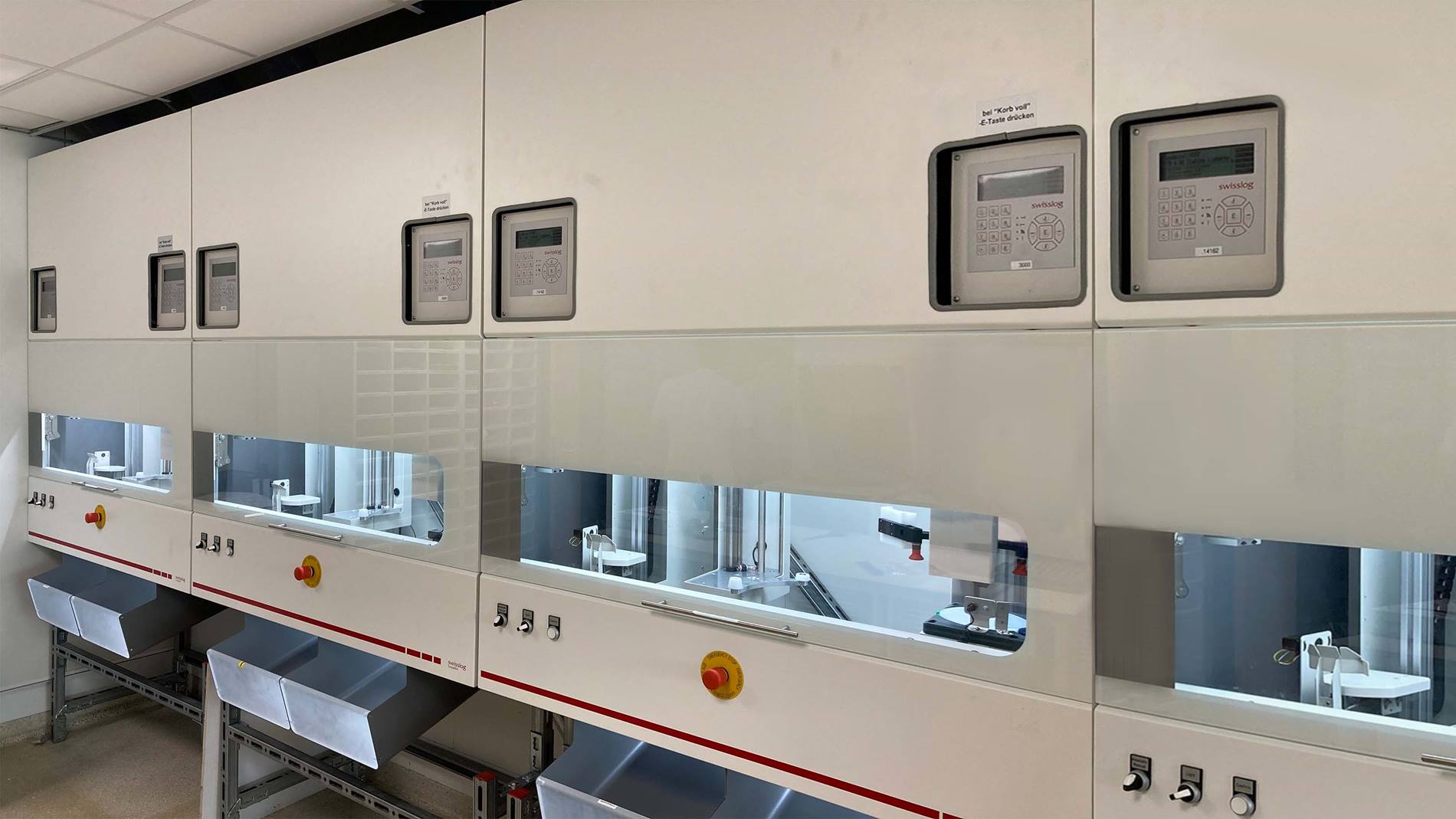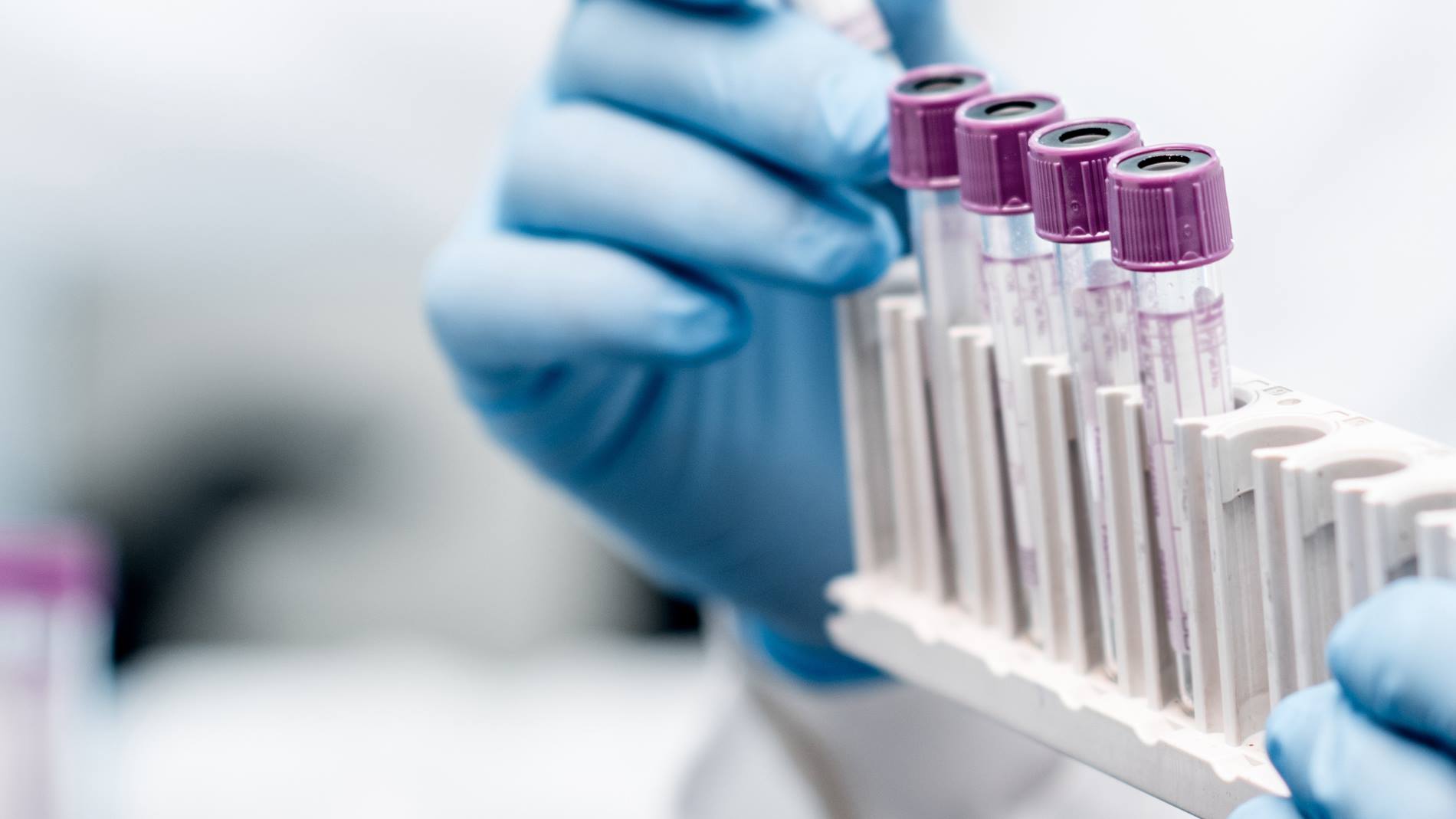Reading Time: 4 min.
Laboratories form the basis for every diagnosis and therapy recommendation in a hospital. Reliable and targeted sample analysis enables doctors to quickly prescribe the right therapy. In this area, smooth processes are ensured by automation solutions. Especially when medical goods are transported from the wards to the lab, pneumatic tube systems and fully automated stations make it possible to shorten throughput times. Handing over specimens to the analysis line in the laboratory is usually the last procedure that is still handled manually in many hospitals. That said, can this step also be automated?
Care teams rely on the rapid analysis of specimens in order to give an early diagnosis. Thousands of medical specimens reach a hospital laboratory every day, and one thing quickly becomes clear: laboratories are one of the most important places in a hospital. Here, medical samples are being analyzed to draw conclusions about possible diseases. The findings are forwarded to the responsible doctors.
Speed, reliability and accuracy in processing sample material are of major importance. All three aspects can be supported by automated transport solutions such as pneumatic tube systems (PTS). By means of a receiving station that automatically opens carriers upon arrival, another step in the lab can be automated.
Fully automated sample unloading with the OpenLog
The OpenLog station for pneumatic tubes systems saves time in laboratories, which can then be put into the analysis of specimen. OpenLog allows a completely automated receiving and unloading process of the material that is transported within the carriers. This eliminates the necessity of handling carriers manually at the receiving station. Afterwards, the stations automatically return the empty carriers back into the tube system and distribute them to the most needed station in the hospital.
Thanks to this automated process, operators can save up to 50% of time compared to a standard station because the time-consuming need to remove material from the carrier manually is eliminated. Within one hour, OpenLog can open and unload up to 120 carriers.
Despite this high level of automation, one final manual step remains: the content from inside the carrier has to get from the stations to the bulk input module. There, the bulk load is pre-sorted into individual loads before reaching the analysis line. Even though this is usually a short distance of only a few meters, this step leads to the following challenges:
- monotonous tasks are executed by highly qualified medical staff
- errors can occur due to manual transport
- repetitive motions lead to ergonomic problems amongst staff
These challenges can be overcome by adding an additional module – an interface that handles the manual transport between the receiving station and the analysis line.
Meet OLI – a direct connection from the PTS station to the laboratory analysis line
OLI stands for OpenLog Interface and adds a new dimension to automation in a lab environment. The interface is an additional module, which can be connected directly to the carrier station in the laboratory. On the other end, it is connected to the bulk loader and thus directly to the analysis line.
Here's what happens inside the module:
- After a carrier is automatically opened by the recipient station, the samples slide into the opening of the interface.
- There, they get into an open carrier used for samples.
- This carrier is sent to the bulk input module through a tube.
- The carrier reaches a spiral chute where samples slide out smoothly due to the open design of the carrier.
A frequency-controlled blower ensures safe transport, because manual steps become obsolete thanks to this setup. Since space in labs is often limited, this interface solution can also be installed outside the laboratory. This creates space that can be used for the proper performance of laboratory tests as well as for other technical equipment.
Benefits at a glance
Laboratories commonly operate round-the-clock, and the potential for saving valuable time and financial resources increases. It is enabled by the following measures:
-
reduction of manual involvement during the process of sample transportation
- decrease of monotonous work for laboratory employees
- shortening of waiting time for results
- rapid patient treatment achieved through expedited diagnosis leads to shorter occupancy of patient beds
At what point is the direct integration of a PTS into the analysis line profitable?
Processes that are optimized with the help of automation solutions not only support laboratory staff, but also have an impact on a hospital's profitability. By comparing the investment costs and the hospital-specific parameters, the ROI of an OpenLog interface can be determined. In order to create a realistic figure, the variables are researched on site and benchmarked against the country standards.
OLI's first mission at UMC Utrecht
The first installation of OLI took place at the University Medical Center Utrecht in the Netherlands. For many years, the hospital has been successfully using a TranspoNet pneumatic tube system for the automated transport of medical samples. 53 stations and 11 transport lines are used to realize 2,000 transports per day. An average of 700 blood samples per day reaches the laboratory via two OpenLog stations.
Together with the team from UMC Utrecht, our expert team developed and designed an OpenLog interface for the hospitals specific requirements. All challenges and technical requirements were gathered in order to develop an optimal solution and make the last manual steps a thing of the past, too.
Are you in a similar situation as UMC Utrecht? Tell us about the current situation of your laboratory. What are the spatial conditions? What are your technical requirements? Our team of experts is looking forward to working with you on your individual solution.
About the author Olle Bulder
Olle Bulder as Head of Service Sales for the EMEA region is responsible for supporting our customers in choosing their most suitable solution.








